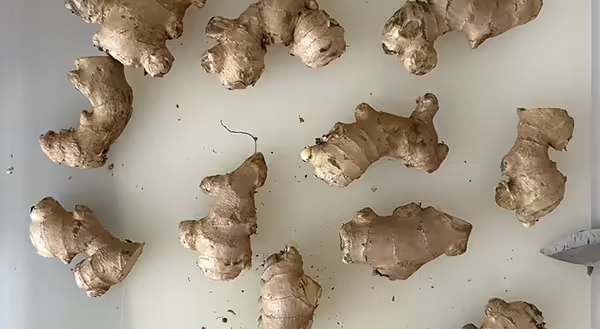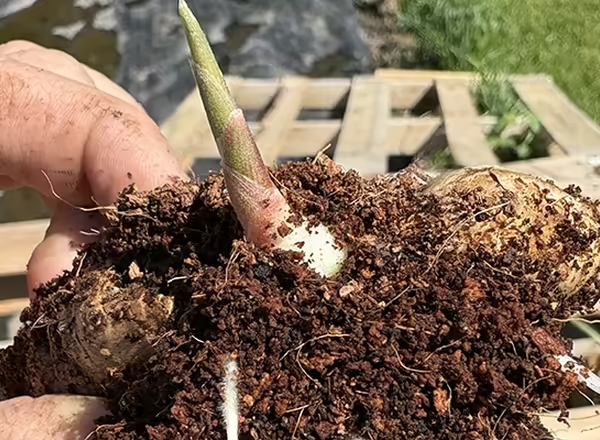
Most farmers’ market visitors are familiar with seeing tomatoes, peppers, eggplant, cucumber, and other high-value horticultural crops on vendor tables throughout the season. This fall, a new and promising specialty crop will likely appear on farmers' market tables across Illinois - fresh, baby ginger. While it currently puzzles many consumers and growers alike, this hopefully will not be the case for long.
Ginger (Zingiber oficinale) is a tropical understory crop that thrives in warm, moist, and shady conditions, which are typical of its native environment. India is the largest producer of ginger, followed by countries such as Nigeria, China, Nepal, Peru, and others. While it is often referred to as ginger root in grocery stores, it is technically a rhizome—a below-ground stem that grows horizontally and supports the growth of both shoots and roots. Currently, the United States imports over 98% of the ginger consumed within the country.
Fresh ginger rhizome can be grown in Illinois, both in greenhouses and in open-field conditions. Since ginger takes about eight months to reach full maturity and develop its hard outer grey skin, it’s often harvested prematurely in Illinois. This results in “baby” or “fresh” ginger, which is bright yellow, pink, and green.
Fresh ginger does not need to be peeled – the entire rhizome can be used. It also has a much more intense flavor in addition to color. Due to these qualities, fresh ginger can sell for $20 to $25 per pound at farmers' markets in October or November, right after its harvest and before the first hard freeze. This price point makes ginger rhizome an attractive crop for diversified family farms across the state.
However, growing ginger in Illinois can be confusing due to unclear best practices for temperate regions, but efforts are being made to establish them.

In the spring of 2024, our team received funding for our proposal titled “Establishing Best Practices and Evaluating Promising Varieties of Fresh Ginger Rhizome for Small Farm Production in Illinois,” through the Illinois Specialty Crop Block Grant program.
Our team consists of seven Illinois Extension Educators, eight small farm businesses, and one community college. We plan to grow ginger according to the best practices currently understood during the 2025 and 2026 growing seasons, and add to a growing body of knowledge on the topic. The overall goal of the two-year project will be the publication of an Illinois Ginger Growers Guide in 2027.
Beginning the pre-sprout (germination) process
Around April 1st, our ginger research team started the pre-sprouting process. The first step involves cutting larger, dormant ginger rhizomes into smaller pieces, each weighing between 1 to 3 ounces. Each piece should have at least 1 to 2 growing points, like the “eyes” found on seed potatoes. It is beneficial to allow the freshly cut rhizome pieces to cure in a dry area with adequate airflow for 48 hours before placing them in the pre-sprouting trays.
Cut pieces of ginger rhizome are then placed in flats that are halfway filled with moistened coconut coir and completely buried. Ideally, these flats should be placed on heat mats to simulate the warmth of tropical soils. Humidity domes can be used to maintain adequate humidity levels. After four weeks of intermittent wetting and drying through misting each tray, the ginger rhizomes will begin to grow roots in the coconut coir, and green shoots will emerge above the soil line.
Once 50% of the rhizomes in trays have 4–6-inch green shoots after about 4-6 weeks of pre-sprouting, ginger rhizomes need to be acclimated to outdoor conditions before planting in hoop houses or in the field. This process is known as hardening off. If planting outdoors, it is essential that soil temperatures are above 55°F.
For those interested in learning more about ginger rhizome cultivation in Illinois, be on the lookout for the Illinois Extension and Epiphany Farms Ginger Field Day scheduled for September 2025!